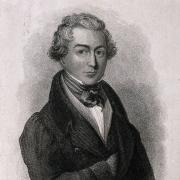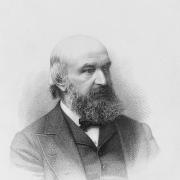Cornwall Life speaks with Sir Tim Smit who uncovered and revived one of the county’s biggest attractions

This story plays out like a movie – a kind of Secret Garden for grown-ups. Imagine this – a city-dwelling record producer who has moved his family to Cornwall for a better life, goes exploring one day and finds a battered, aged door that just asks to be opened.
When our hero goes through the door he discovers that the once beautiful and productive estate is now overgrown with bramble and ivy, buried under decades of neglect. In one small corner of this jungle, under a mound of weeds and fallen masonry, he discovers a tiny room. It is frozen in time, a place where the gardeners working this estate would take shelter. On the wall – barely legible – is a motto: “Don’t come here to sleep or slumber.” The date offers a clue to how the garden came to be in such a sorry state. August 1914. Here laboured the men who left their Cornish home for the Great War, never to return. They are the reason why this is a green sleeping beauty.
The camera zeroes in on the man who has stepped back in time – Tim Smit. A man with a vision that this land could thrive again. A man with the passion, the enthusiasm and the persuasiveness which will be the key to unlocking The Lost Gardens of Heligan.
These gardens were rescued, carefully restored and lovingly rejuvenated and this year marks the 30th anniversary of their opening. Tim is still there, still fired up with a passion for this and the world-famous attraction which followed in its wake – The Eden Project.

“It feels like yesterday. Or maybe a long time ago. It depends what mood I’m in,” he laughs. “It all started when I saw the signatures from August 1914. I discovered in that moment the need to tell the story of ordinary men and women who made these gardens great. When I found Heligan, I couldn’t tell you anything about plants at all. I was an archaeologist by training and I regarded plants as artefacts from a cultural narrative. But I learned quickly as we restored Heligan.
“I was fascinated by the working people and I fell in love with the whole idea of telling that story. The great estates were right in the middle of sustainable ecology. At Home Farm at Heligan, 25-30% of the land was used to grow oats for horses. It’s like farmers today who would spend about 25-35% on fuel.
“I realised how amazing these places were. This was science in action. They knew how to grow certain foods on a north-facing wall, and then on a south-facing wall for later crops. They knew how to store apples. They knew about saving cereal for planting. These are all things that should be at the centre of any education system; what we learn in schools can seem rather primitive and dull.”
Tim notes the revival of interest in an “olde worlde” approach to the environment and agriculture, especially during the Covid-19 lockdown.

“The amount of vegetable seeds sold during lockdown is an all-time record and people were watching grow-your-own videos. So many of my friends who had given up on gardening have gone back to it, and it has a mental health benefit too. It seems really funny that it’s regarded as more important to know maths or ancient history than it is to know how to grow things,” he says.
“I say to people that the ones who will save us from extinction are the horticulturists. They are as important as the engineers or the pharmacists. Without them, we can’t eat. You learn respect for their knowledge.”
Together, Tim and co-founder John Nelson, who died in 2014 at the age of 75, brought Heligan back to life.
“The restoration was never about bricks and mortar,” says Tim. “It was about respect for tradition and the actual products of horticulture. I love the sense of an almost spiritual renewal. Being aware of the ebb and flow of life itself at the heart of some great big thing. I find it miraculous and wonderful and life-affirming.

“John was my partner in Heligan and we were wonderful friends. He used to say ‘Rome wasn’t built in a day’. When he died we mixed his ashes with mortar and put him at the top of the melon garden so he could keep an eye on everything.”
After 30 years Tim is still keeping an eye on things, but he remains modest about his own role. “Me? I’m just a steward.”
The Lost Gardens of Heligan were voted the nation’s favourite garden in a BBC Gardeners’ World poll – gathering as many votes as the remaining nine on the list combined together. At the end of the 19th century, there were over a thousand acres at Heligan. Some of the historic plantings in the Pleasure Gardens of this estate near Mevagissey are more than 150 years old.

Heligan today encompasses 200 acres. A wonderland of woodland, formal spaces and productive gardens. The Jungle has planting which thrives in the mild climate and the chance to cross a Burmese rope bridge. The farm has been recognised for its work by the Rare Breeds Survival Trust and Heligan is home to National Collections of camellias and rhododendrons.
heligan.com
This article first appeared in Cornwall Life magazine. Discover our latest subscription offers here































